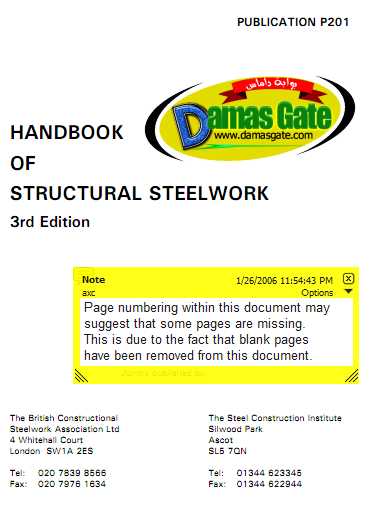HandBook of Structural SteelWork
1.1 Design aims
The aim of any design process is the fulfilment of a purpose, and structural steelwork design is no exception. In building design, the purpose is most commonly the provision of space that is protected from the elements. Steelwork is also used to provide internal structures, particularly in industrial situations.

The designer must ensure that the structure is capable of resisting the anticipated loading with an adequate margin of safety and that it does not deform excessively during service. Due regard must be paid to economy which will involve consideration of ease of manufacture, including cutting, drilling and welding in the fabrication shop and transport to site. The provision and integration of services should be considered at an early stage and not merely added on when the structural design is complete. Under CDM requirements the designer has an obligation to consider how the structure will be erected, maintained and demolished. Sustainability issues such as recycling and reuse of materials should also be considered. Any likely extensions to the structure should be taken into account at this stage in the process.
1.2 Methods of design
Historically, engineers have been accustomed to assume that joints in structures behave as either pinned or rigid to render design calculations manageable. In ‘simple design’ the joints are idealised as perfect pins. ‘Continuous design’ assumes that joints are rigid and that no relative rotation of connected members occurs whatever the applied moment. The vast majority of designs carried out today make one of these two assumptions, but a more realistic alternative is now possible, which is known as semi-continuous design. As stated in BS 5950-1:2000
[1]
Clause 2.1.2.1, the details of the joints used should fulfil the assumptions of the chosen design method.
1.2.1 Simple design
Simple design is the most traditional approach and is still commonly used. It is assumed that no moment is transferred from one connected member to another, except for the nominal moments which arise as a result of eccentricity at joints.
Download
*